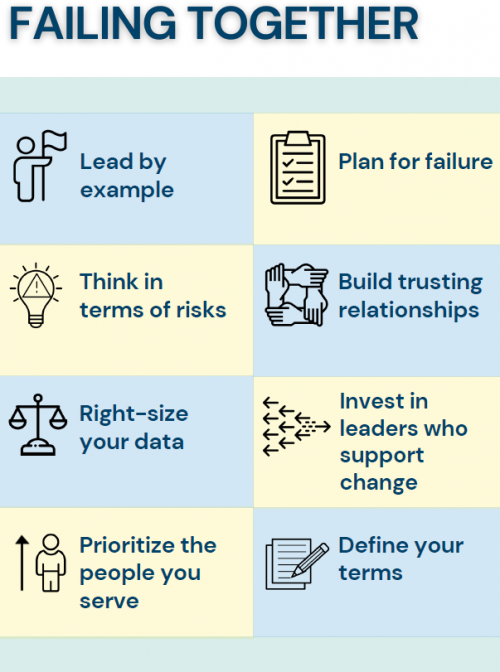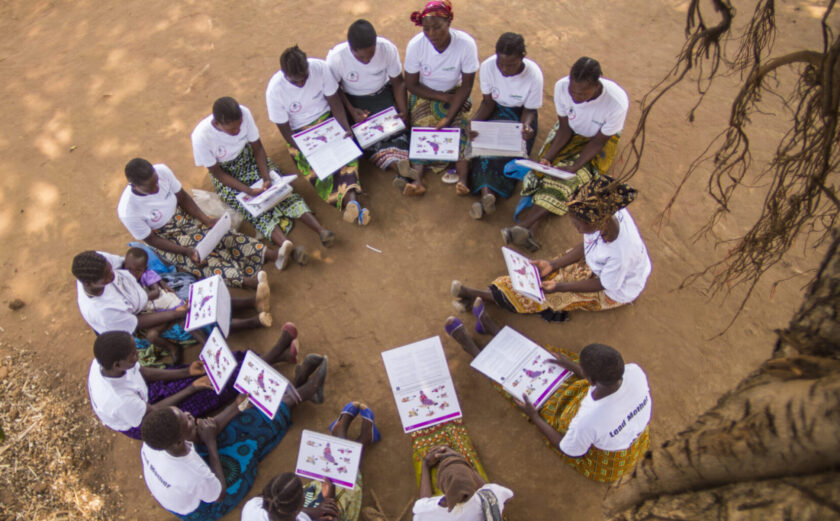
Plan to Fail—Together
What if we could talk to donors about what isn't working, and what we need to do to fix it?
Failure is the “f-word” of international development. In many cases, it’s so taboo we don’t even use the word.
Think of all the times you’ve said something else to avoid naming failure. Challenge, obstacle, lesson learned, learning, pivot, adaptation—these are all phrases we use to step around the plain fact that sometimes the things we try don’t work.
Everyone in development knows that sometimes we fail. There’s no shame in it. If we never failed, it would mean we never tried anything new. It would mean we were only working in the parts of the world where things were easy and the answers were clear. That’s not what international development is all about. Development is about tackling complex problems with multiple stakeholders in contexts that change every day. There is no way to solve these problems without failing. But we are reluctant to talk about it, especially on the record.
Ask any implementer why they don’t talk more about failure so everyone can learn from it, and within a minute, you’ll hear, “well, we would, but you know…the donors…” This is a real concern—failure can mean losing funding, jobs, and reputations. Incentives are usually to minimize risks, and admitting failure can be a big risk.
But the specter of the donor is sometimes a self-imposed fear. What if we could talk to donors constructively about what is failing, and what we need to do to fix it? What if we spoke up early so we could pivot together and get better solutions?
On April 8th, three generous donor representatives sat down with InterAction’s Evaluation and Program Effectiveness Community of Practice (EPECoP) and shared their perspectives on having constructive conversations about failure.
Veronica Olazabal from The Rockefeller Foundation, Lane Pollack from USAID, and Leslie Wingender with Humanity United talked about what it takes to learn from failure. Here are some of their key lessons:

Lead by example. “With that power dynamic the way it is it is, we—the donors—have to take the lead in setting that tone and creating that space to talk about failure,” says Lane. Tools like pause and reflect, leadership conversations, and storytelling can all be powerful ways to set a tone that learning from failure will be rewarded. Leslie spoke about sharing the onus of learning from failure and recognizing what isn’t working—it can’t all be on the NGO to carry this. Leslie points out that “We need to recognize our power as donors in the conversation, even when we don’t feel like we have power.”
Implementers have a responsibility here, too. Implementing partners need to practice authentic conversations where we share what’s not working with concrete plans for what we want to do next. NGOs and donors have to co-own failures and how we contribute to them from all sides.
Plan for failure. “Think about your contingency plans. What do you want to do, and who will pay for the pivot? Pivoting is not free” is one of Veronica’s key pieces of advice. Look at the budget, and put in flexibility to adjust as we see what works and what doesn’t. All three donor representatives talked about the importance of building this into the plan from the beginning. Change can be hard, and it costs money, so we should start thinking about how to plan for inevitable changes. It’s always easier for donors (especially big institutional ones) to adjust when that thinking is already built-in.
Think in terms of risk. Start framing your thinking in terms of minimizing different types of risks. Think not just about the risks the project will be facing but also what risks you have if you don’t adapt. Who bears that risk? What is the risk for the donor if this doesn’t go right? The risks for participants? How can we reduce those risks and put them with people who can afford to carry them?
Build trusting relationships. “We need to enter into these conversations with a ‘we’ mindset,” says Lane. The more we can address what’s not working collaboratively, the faster and more effectively we’ll pivot to better solutions. If you’re talking to a donor—especially a philanthropic one—it’s because they are interested in a relationship with you. If you already have a grant—or any funding mechanism—you have a relationship with that donor. Have authentic conversations. Arm your donor with the information they need to make the case to their own stakeholders about why you have to pivot and how you’re turning a small problem into a pivot instead of a major failure.
Right-size your data. Think about how you’re going to collect just enough data to make the decisions you need. Too often, Veronica says, we build overly technical information systems that create “a lot of running around,” which is not a good use of time or resources. Think about the big picture of what you need to know and who needs to know it.
Invest in leaders who will support change. We need to invest in leaders who have experience adapting amid complexity. “There’s too much space between that which we are learning and the decision-makers who need to do something about it.” We need to have a better alignment between learning and decisions. That also means we need to invest in the time and space to learn what we need to know to pivot—and learn it fast enough to make a difference.
Prioritize the people we serve. We need to do a much better job of centering the voices and experiences of the people we are trying to serve. That means building feedback loops that work for them and lift up voices beyond just the donor and the implementer. We all need to recognize the power we bring to conversations and learn to create more space to hear that something is not working, and we need to do it differently.
Define your terms. Definitions matter. Think about who decides what counts as a failure. Where is there an opportunity to correct the problem, and at what level? Failure for one person could be an adaption at the tactical level or in an operational pivot. It could require a broader strategic change from a different actor. Failure happens, and we need to make sure that we, NGOs, and donors are talking the same language.
Want to hear more about what these donors had to say about learning from failure? The full event recording is available here.
Want to join the Evaluation & Program Effectiveness Community of Practice for our next discussion? InterAction Member organization staff can sign up here.







